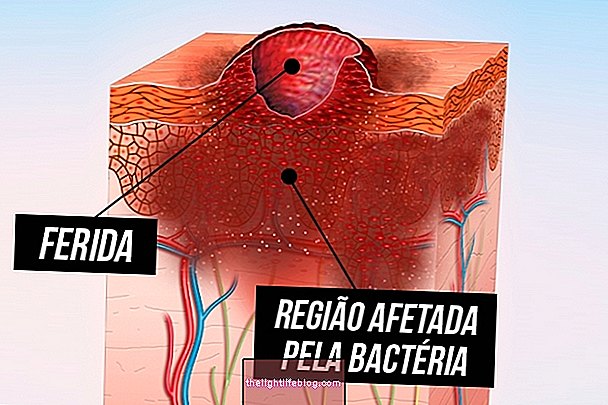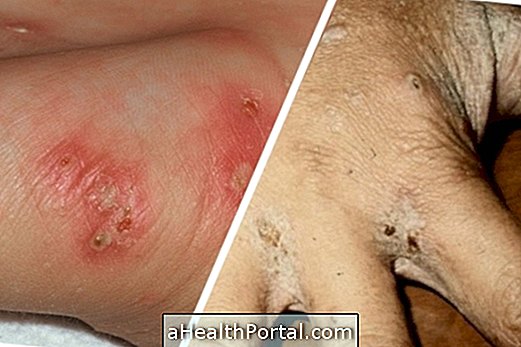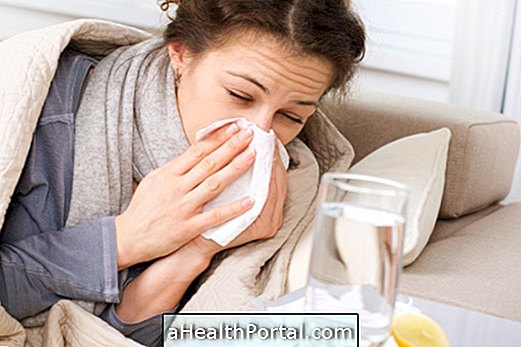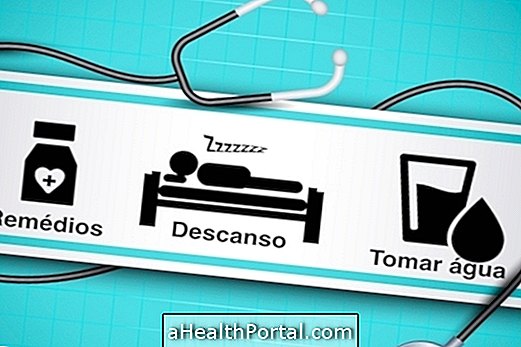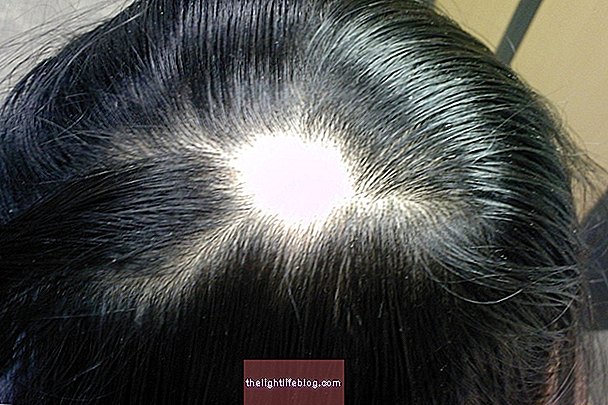White patches on the skin can be caused by a variety of factors, ranging from simple ringworm and white freckles to skin problems such as dermatitis, hypomelanosis or vitiligo.
When a spot appears on the skin you should note its size, where it is located, when it appeared and other symptoms such as itching, dry skin or peeling of the skin. After that, what you should do is make an appointment with a dermatologist so that the correct cause can be identified, and then indicate the most appropriate treatment.
Some possible causes of white patches on the skin and their due treatment are:
1. Skin ringworm
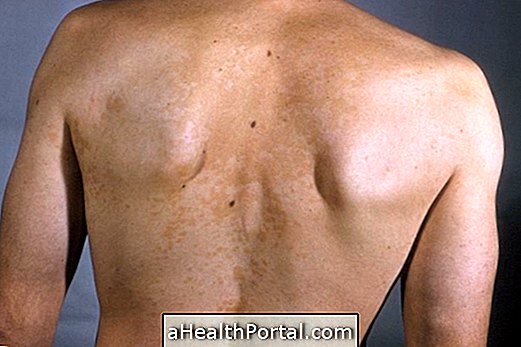
One of the most common causes of small white patches on the skin, which are very itchy and can spread through large areas of the body is the beach mycosis, psoriasis versicolor or white cloth, as it is also popularly known.
Despite the name ringworm of the beach, probably the person had the ringworm before, but only realized after going to the beach, because the affected area is not tanned. Usually the fungus that causes this fungus naturally inhabits the skin, but due to some alteration, it becomes unpleasant, multiplying a lot, giving rise to the typical spots that affect the cervix, trunk or back.
- What to do: pass an antifungal ointment indicated by the dermatologist, which may be Isoconazole, Ketoconazole or Miconazole. Shampoo, soaps and gels may also be indicated to supplement the treatment. To prevent other people in the house from being affected each person should use their own bath towel and not share their clothes. See some ointments used to treat ringworm.
2. Stains caused by the sun

Sometimes light-skinned people or brunettes get tanned when they go to the beach or pool and after a few days the skin peels, giving rise to skin small white patches, which appear especially on the arms, chest and back.
- What to do: It is important to moisturize the skin daily, and to get sunscreen always before exposing yourself to the sun because the skin is thinner and more sensitive, and it has a higher risk of sunburn. The ideal is to moisturize the skin very well about 10 days before going to the beach and always eat foods high in vitamin A such as carrots, tomatoes, boiled eggs, papaya and mangos, for example, because the more hydrated the skin is, the lower the risk of flaking and staining.
Check out more skin care tips for a perfect brass.
3. Atopic dermatitis

Atopic dermatitis is a type of inflammation of the skin that appears most often in babies, but it can appear at any age. Usually, dermatitis causes red patches on plaques or lumps, but when they disappear, they can make the site whiter. Here's how to identify and treat atopic dermatitis.
- What to do: It is usually necessary to use steroid medicines prescribed by the dermatologist, such as Fenirax, twice a day. In addition, the skin should be kept hydrated, and an antihistamine remedy may also be needed to relieve itching.
4. White fennel

Light brown people may develop several small white freckles that may appear on the hands, arms or legs, especially after 40 years of age. This usually happens in people who have fair skin or who have been exposed to the sun for many years without sunscreen.
- What to do: It is advised to properly protect the skin from the sun by always using sunscreen when going to the beach or pool, or whenever you spend more than 15 minutes exposed to the sun. Wearing a glove on our hands can also be helpful in preventing the sun's rays from aggravating skin lesions.
Learn more about white freckles.
5. Vitiligo

This is a disease that leads to the appearance of large white patches on the skin, which can affect even the inside of the mouth. Its cause is not fully known but is believed to occur due to a genetic change or due to some alteration in the immune system, where the body starts to fight against melanocytes.
Learn more about vitiligo and what treatment options are available.
- What to do: The doctor can indicate treatments such as phototherapy or application of creams and ointments with corticosteroids and / or immunosuppressants, to understand the best option in each case. One of the medications that may be indicated is Melagenina plus which stimulates the production of melanocytes and melanin, thus smoothing the tone of the skin.
6. Hypomelanosis

It is also known as hypomelanose mestizo, and is not caused by any fungus, being a characteristic of the person and very common in Brazil. In these cases there are some parts of the body that are lighter than the person's skin tone, and although sun exposure improves contrast, the affected parts are always lighter than the rest of the body. This type of skin change is more common in people who have some type of allergy.
- What to do: Although you do not need any specific treatment, sun exposure early in the morning or late afternoon may be helpful in trying to standardize the person's skin tone.
Learn more about hypomelanosis.
7. Tuberous sclerosis

Also known as Bourneville disease or only Epiloia, it is characterized by the appearance of white patches isolated from each other that can affect any part of the body, although the trunk is more common. They are often first identified in infants or children up to age 6, and there may be only 1 or more than 100 spots on the body.
- What to do : You should consult a dermatologist to confirm the diagnosis and start treatment to avoid complications such as seizures or even kidney problems. Understand better what tuberous sclerosis is and how the treatment is done.
Can the white spot be cancer?
Non-melanoma skin cancer can cause a spot on the whitish skin, with uneven edges and difference in texture and color in the same spot. In that case one should go to the dermatologist so he can observe and verify if it really can be skin cancer and what it should do to treat. See other features and photos of skin cancer.
White spot on the skin can be worms?
White spots on the skin are not always indicative of a person having worms, but the association of this symptom is correct because when the person has worms it is common for their body not to fully absorb the vitamins and nutrients of food, and this lack of Vitamins can cause white patches on the skin. The main vitamins that cause white patches on the skin are calcium, vitamin D and E that can be found in milk, sardines, butter and peanuts, for example.
If the cause of white spots on the skin actually is worms, they should be identified on parasitological stool examination and treatment can be done with the use of wart remedies. See other symptoms of worms.


